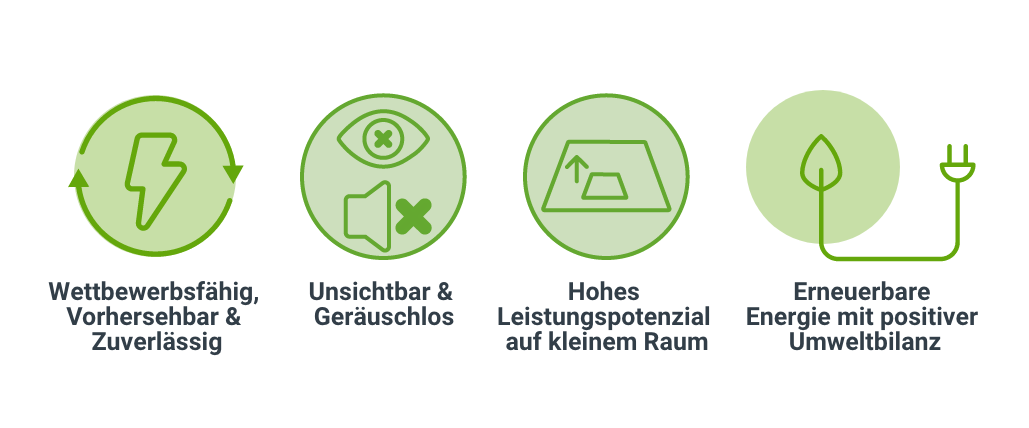Wave or tidal power plants are heralded as the next big technological leap in the field of renewable energies, and research and development efforts are underway on several fronts.
Idea
The concept is as simple as it is proven: "windmills" that are installed on the seabed or riverbed and whose blades are driven by underwater currents. The rest of the technology is well known; the turbines are connected to an electric generator via a gearbox. This produces the electricity, which is fed to the transformer station via a connecting cable on land.
In contrast to windmills, the kinetic energy in tidal areas is reliable, while the wind force can vary greatly, up to wind force zero: calm. Tides are so predictable that a specific tidal region can be expressed in kilowatt hours of electricity per turbine.
Research USA
However, the design and use of most underwater turbines is still in its infancy and there is still much to learn about how they interact with the underwater environment.
Since November 2020, the US Department of Energy's Advanced Research Projects Agency-Energy (ARPA-E) has been funding various projects with grants totalling around 35 million euros to develop cost-effective technologies for underwater turbines. These projects are summarised under the name SHARKS (Submarine Hydrokinetic And Riverine Kilo-megawatt Systems).
SHARKS projects aim to generate marine technologies at a final cost of less than five euro cents per kilowatt hour. Research is focussed on a tidal energy converter developed by the Californian company Aquantis. The turbine is installed on a versatile floating platform that enables stable power generation under all sea conditions. A two-bladed rotor with a diameter of 10 metres and a variable angle of attack delivers around 160 kW.
This underwater turbine is said to be ideally suited to the Gulf Stream along the east coast of the USA, which generates several circular eddies. The proximity of these energy-intensive eddies to large cities makes them a strategic energy resource.
The National Renewable Energy Laboratory (NREL), which is also part of the US Department of Energy, is working closely with several SHARK projects. In order to improve and analyse the efficiency of these projects, NREL engineers are developing open source software that combines the development, control and optimisation of new marine technologies.
Research South America
In South America, the Brazilian start-up TidalWatt is also developing a new generation of underwater turbines that are specially designed for generating energy in the sea. According to the company, a TidalWatt turbine with a diameter of three metres can generate an output of 5 MW at a current of 1.87 knots (approx. 3.5 km/h) - practically the same output as a wind turbine with a diameter of 180 metres, according to a company representative.
Research Europe
French exploration group CGG (Compagnie Générale de Géophysique), based in Paris, has joined a €5.2 million cross-border initiative, known as the Selkie Project, to promote the development of marine energy in Wales and Ireland. The aim of the project is to improve the performance of wave and tidal power plants. CGG says it will contribute its earth and environmental science capabilities and support the project by developing and trialling new environmental monitoring technology.

The French company HydroQuest, based in Meylan, also has extensive scientific and industrial expertise in the fields of hydraulic, electrical and mechanical engineering and offers energy generation projects from a single source. The OceanQuest turbine presented in 2019 has an output of 1 megawatt and successfully defies environmental influences - under real conditions. This project paved the way for the development of larger capacity turbines. The advantages are obvious for the company:

Conclusion
Much is in flux in the offshore energy sector. This is also shown by the results report presented in January 2024 by the European Network of Transmission System Operators for Electricity (ENTSO-E). The report assumes that almost 500 gigawatts of generation capacity will need to be built in the European Union, the United Kingdom and Norway in order to achieve the expansion targets by 2050. ENTSO-E estimates that around 400 billion euros will have to be invested to achieve this.
However, the rather modest investments and subsidies for wave and tidal power plants currently only lead to the conclusion that the "starting signal" for more speed has not yet been heard from those politically responsible.
Source: Offshore










